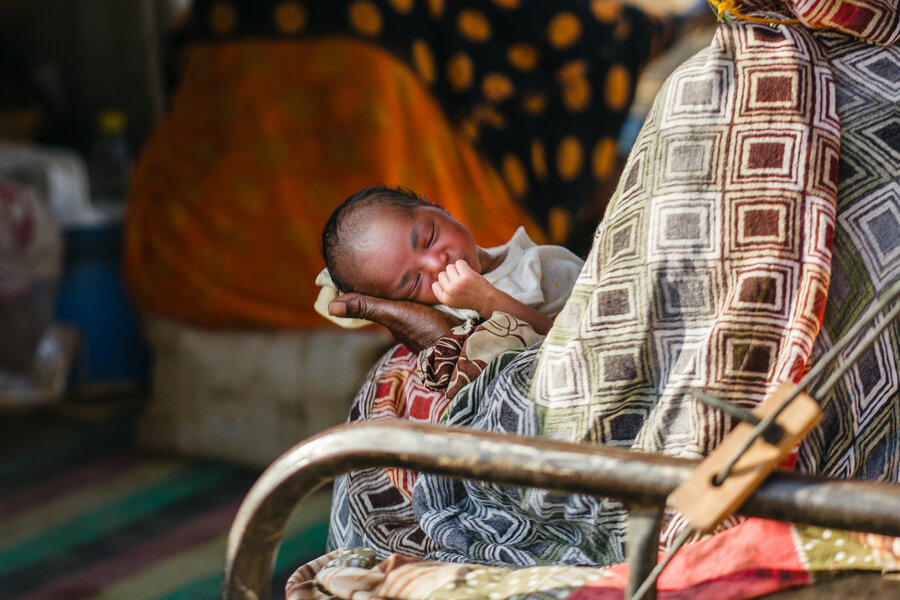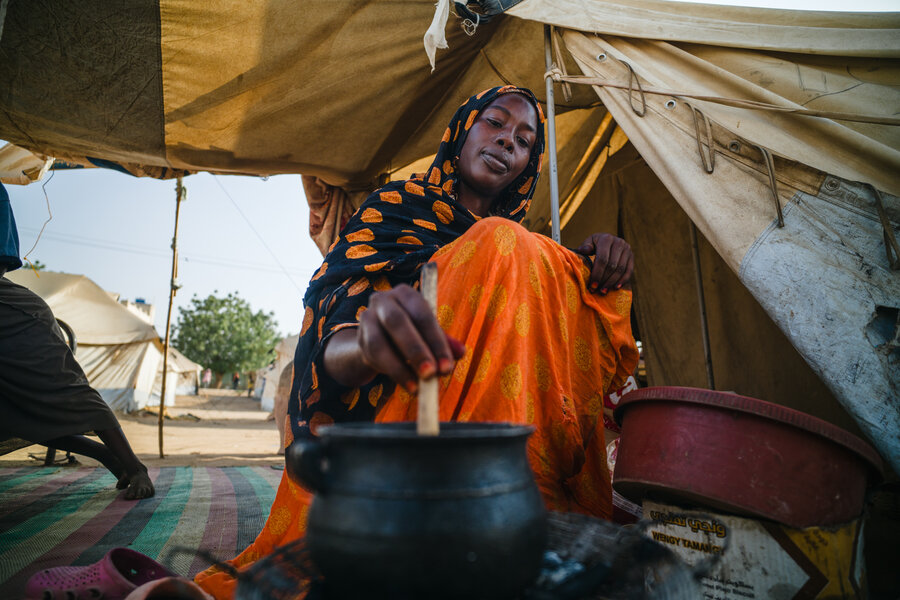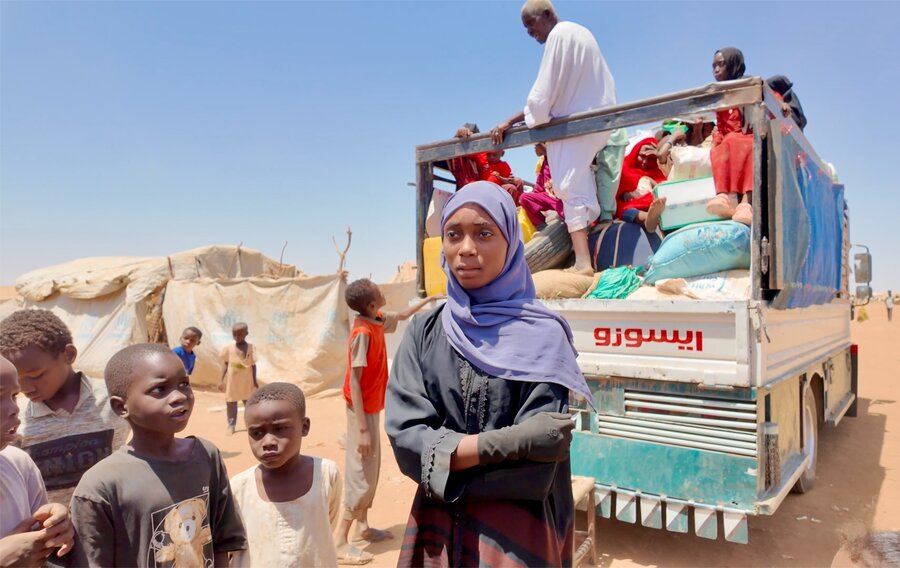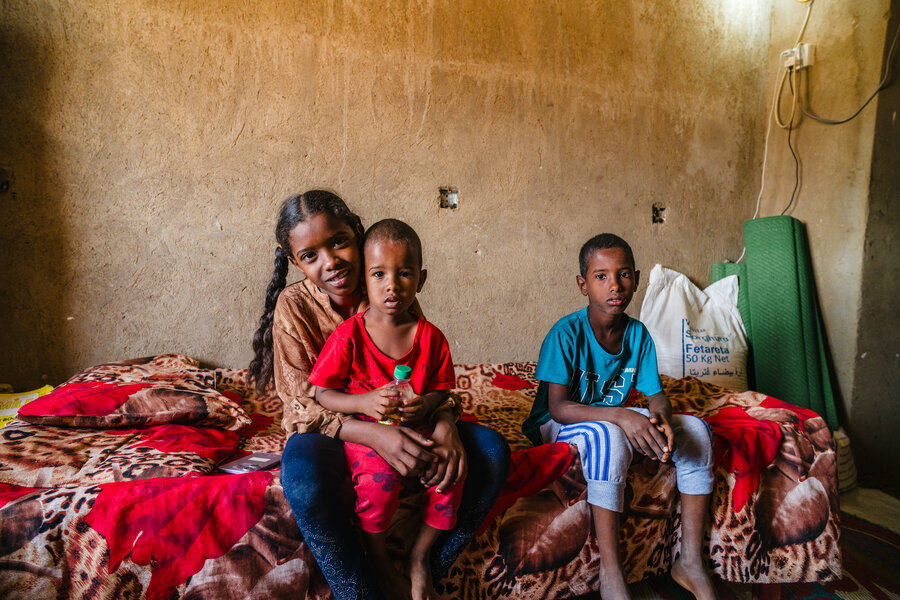Sudanese mark grim war milestone amid surging hunger, hopes for peace

In Khartoum’s formerly bustling Sharq Al Nil neighbourhood, Abu Sufian once juggled several jobs to make ends meet: repairing and building furniture, while also working for a local court administration.
The father of four took pride in his work - which he did free of charge for poorer families - and over time became well-known for the quality of his tables, chairs and cupboards. Through Abu Sufian’s job at the court, he became involved in public service, chairing a local neighbourhood committee.
Then conflict erupted in Khartoum, in April, 2023. Bullets and bombs rained down on his neighborhood, upending his life - and, as fighting spread to other parts of Sudan, tearing the country apart.
“Even after leaving, the fear of bombs falling remained for a long time,” recalls Abu Sufian, whose family escaped to eastern Sudan, and now counts among some 12.5 million conflict-displaced people inside and outside the country. “When I think about going back, I hear the bombs again, and the fear comes back.”
As Sudan enters its third year of war, hunger has reached catastrophic levels. Famine has been confirmed in 10 areas, and 17 others are at risk. Millions of people like Abu Sufian and his family are on the move, crowded into temporary shelters before fighting uproots them once again.
In a nation where nearly half the population is hungry, World Food Programme (WFP) assistance is sometimes the only barrier against starvation. Over 13 million people across Sudan have received WFP assistance over the two years since fighting erupted. But even as we aim to scale up support to reach seven million people monthly by mid-year, we face formidable funding and access constraints.
“Without immediate assistance, especially in famine or famine-risk areas, thousands of lives are at risk," says WFP Sudan Acting Country Director Makena Walker. "We can scale up – but we need all parties to guarantee safe, unhindered access for humanitarian convoys.”
Born into war

At a camp for internally displaced people in the eastern city of Kassala, infant Hinda’s first glimpse of “home” is from the shade of a plastic tent. While her mother Awadiya and four sisters still remember their pre-war lives in south-central Sudan, Hinda’s earliest memories are shaped by conflict - one where there is no end in sight.
“Our house got burnt. I could only save my girls and now we have nothing,” Awadiya says, describing the family’s escape from her hometown of El Obeid. “But I am still thankful,” she adds, that they came out alive.
Awadiya’s family counts among more than three million people receiving WFP support every month. From her WFP food package, she makes asida, a traditional Sudanese sorghum porridge, accompanied by mullah roub, a sauce of yoghurt and lentils.

These food supplies are a lifeline for Awadiya. She suffers from anemia due to undernourishment, making it challenging to breastfeed newborn Hinda. Regular meals are helping and making it easier.
After two years on the run, she just wants one thing: “peace, so we can go home,” she says.
For some, hopes of returning are becoming a reality. In recent months, active fighting has gradually subsided in some parts of central Sudan – and, most recently, in the capital Khartoum. Sudanese celebrated across the country and abroad, eager and hopeful to head back to lives they once knew.
In Kassala, Dalia Abdellatif Babiker is taking that step. She has no idea whether the home she fled in the southeastern city of Sinja, more than 500 kilometres away, lies in ruins. But she’s boarding a truck anyway with her family and what’s left of their belongings.

“Humanitarian organizations helped us a lot to meet our basic needs,” she says of her time at the camp where she too received WFP food aid. But, Dalia adds, “we want to go back to our homes, as the situation has gotten better.”
Dreams of home
For carpenter Abu Sufian, the pre-war days in Khartoum have faded into a distant dream. “I loved being involved in the community and helping others. I was able to give back to my neighbours. I was able to contribute,” he says.
His life in Khartoum was not always easy, but it was a meaningful one, Abu Sufian says. Most importantly, he was able to provide for his family.
Today, he shares a small room with his wife and children, one of dozens of families packed into an unfinished building in the eastern town of Wad Sharifay. His son too suffers from anemia, and he cannot afford treatment.

As in his past life, Abu Sufian has taken on a leadership role in this displaced community, ensuring there is running water and coordinating the humanitarian assistance the families survive on.
He hears calm has returned to his Khartoum neighbourhood, but he’s hesitant to go back, fearing chaos and destruction. While he once was a master at fixing and refurbishing, he does not know how long it will take to rebuild his pre-war life as a carpenter.

“Where will I work? How will I provide for my family?” Abu Sufian asks. “There are no jobs, no services, only destruction left.”
Yet despite his doubts, he still hopes one day soon he'll be sitting with his old friends in Sharq Al Nil. He dreams of meeting them over a cup of chai (a tea with spices) or coffee, he says, recalling old memories and finding new jobs in “a stable community, where peace is among us.”
WFP’s emergency response in Sudan is made possible through contributions from our donors including the African Development Bank, Andorra, Austria, Belgium, Canada, Croatia, Cyprus, Czech Republic, Denmark, Estonia, the European Union, France, Germany, Greece, Hungary, Iceland, Ireland, Italy, Japan, KS Relief, Kuwait, Lithuania, Luxembourg, Malta, Mohammed bin Rashid Al Maktoum Global Initiatives (MBRGI), Netherlands, Norway, Novo Nordisk Foundation, Russia, Saudia Arabia, South Korea, Slovenia, Spain, Sweden, Switzerland, Ukraine, the United Arab Emirates, the UN Central Emergency Relief Fund, the United Kingdom, and the United States of America.



